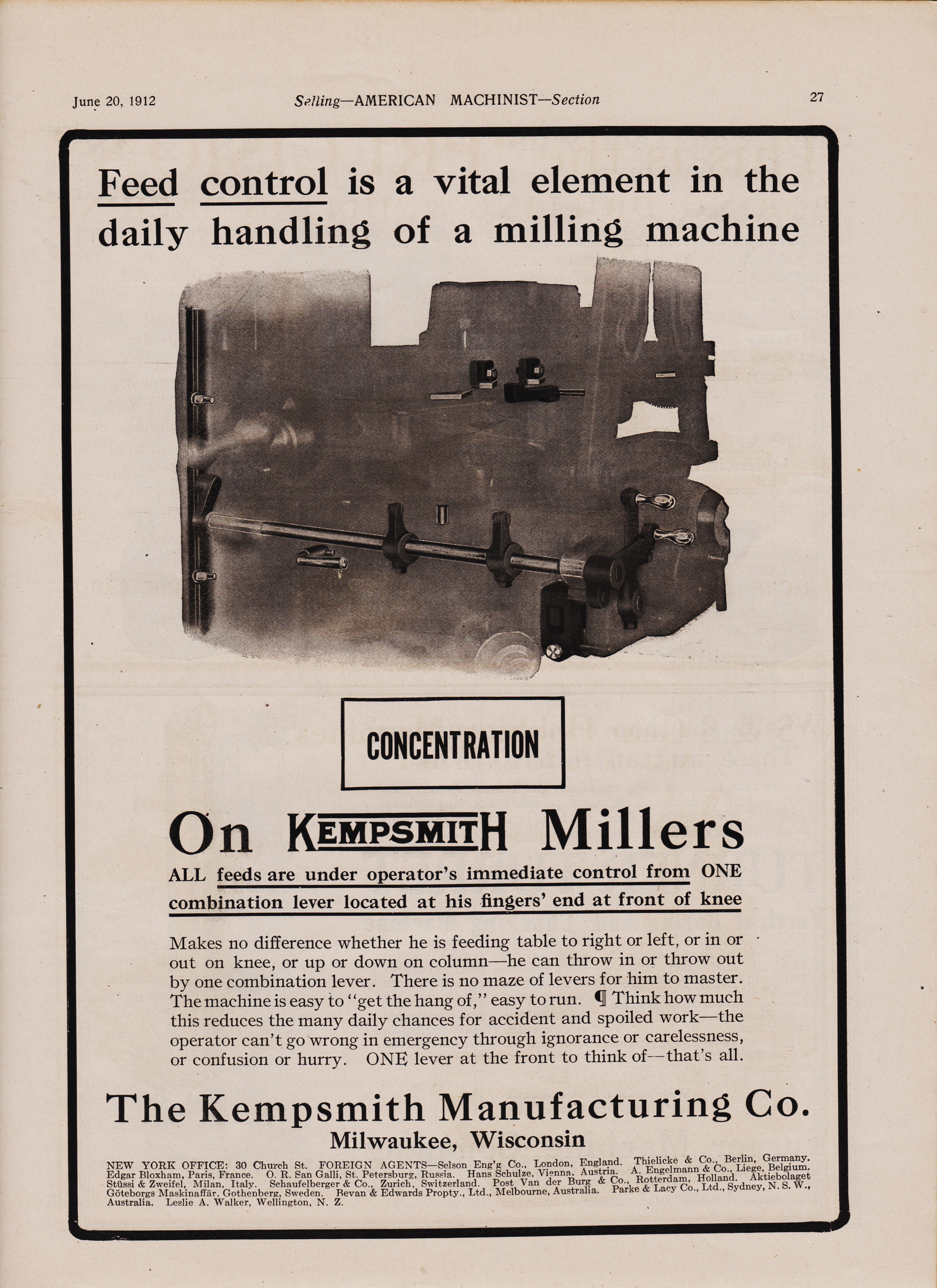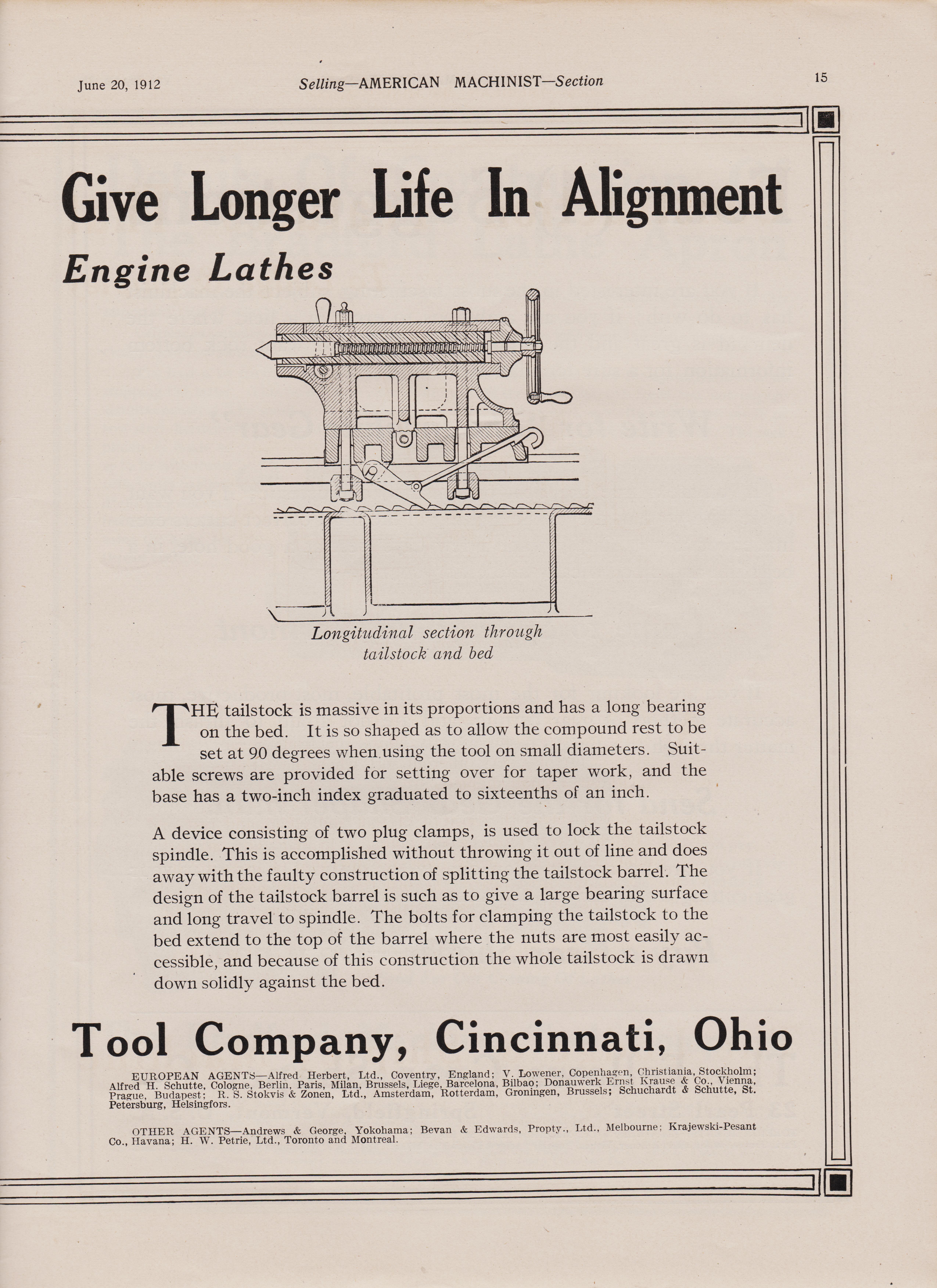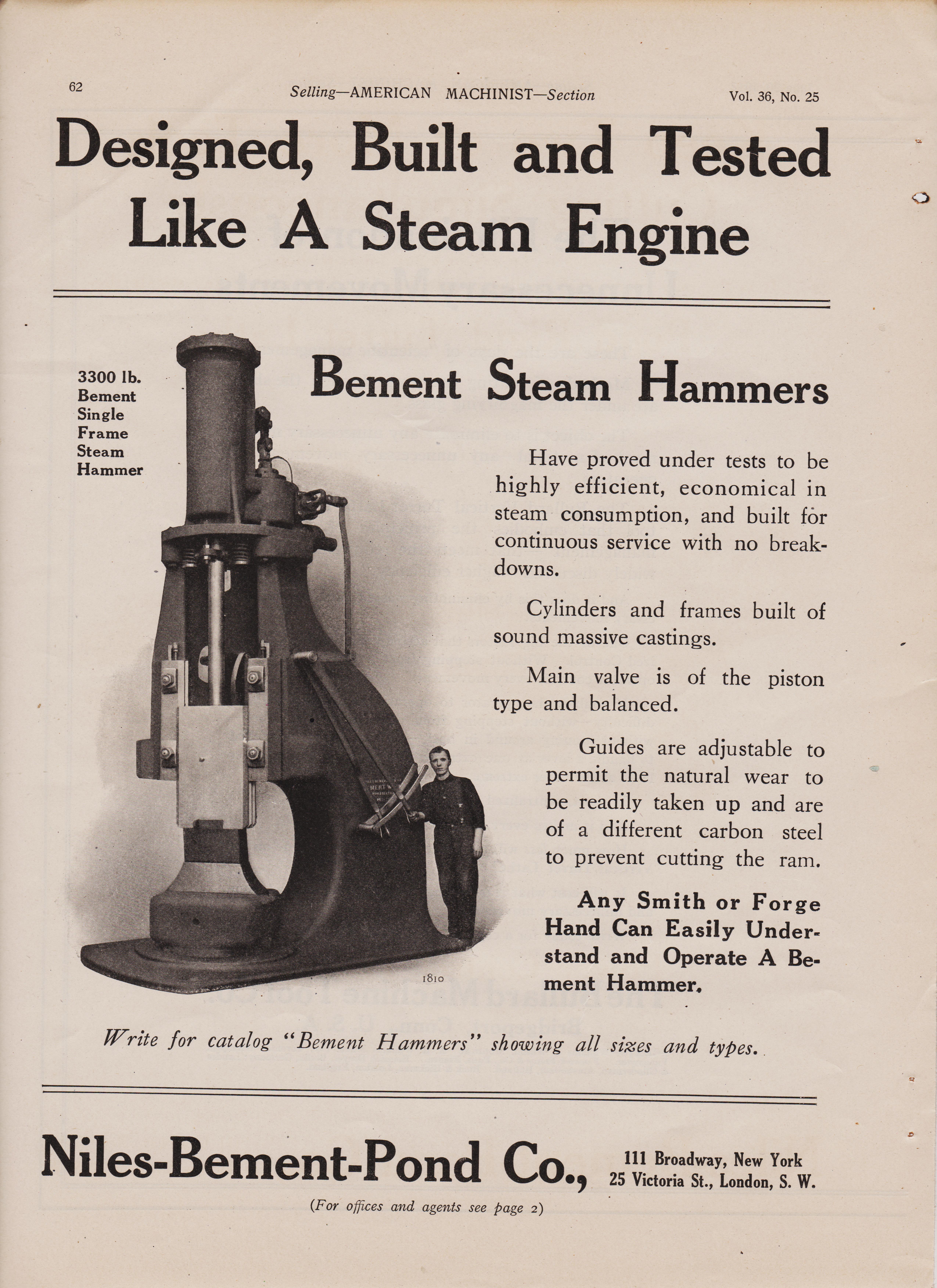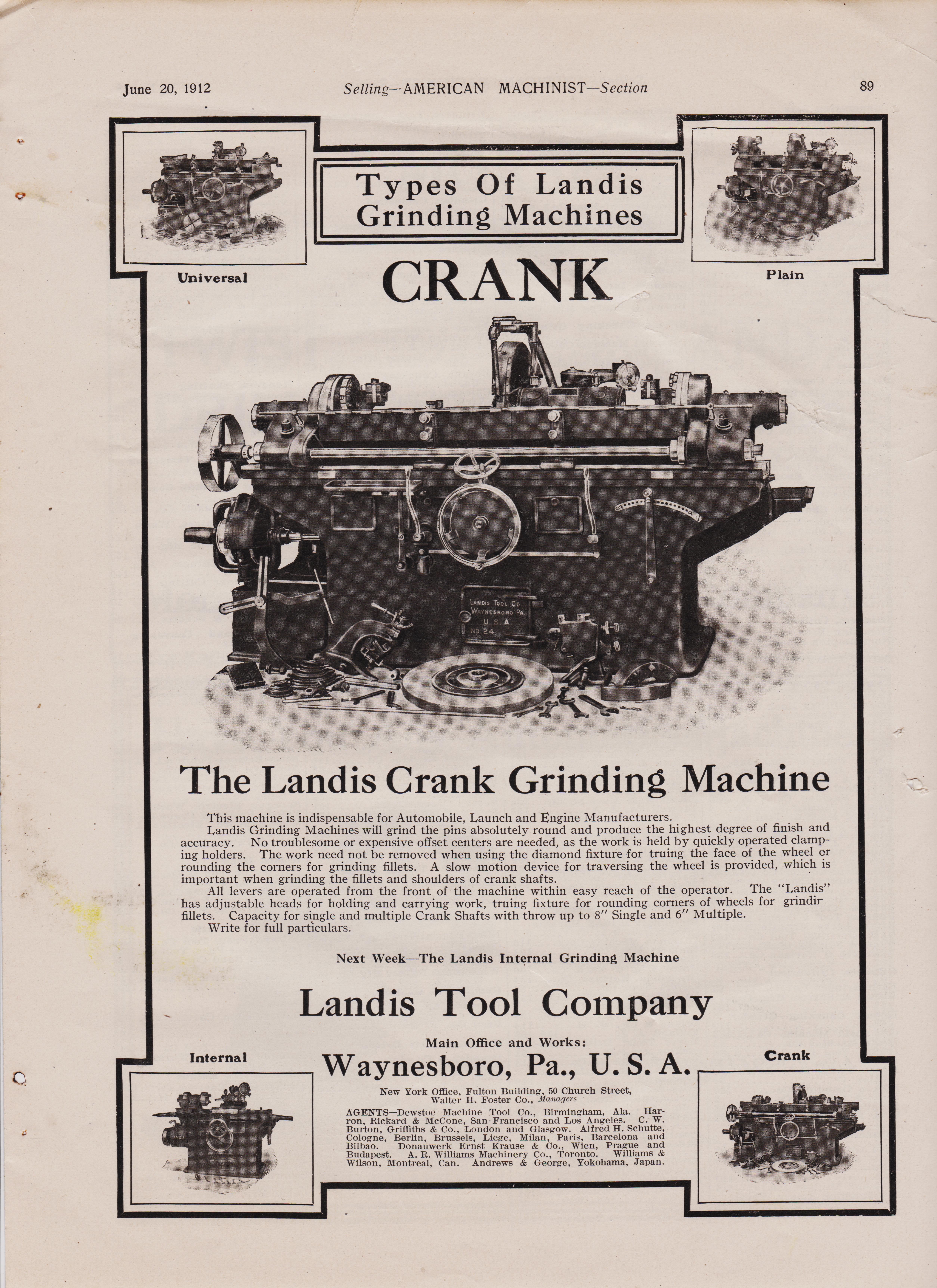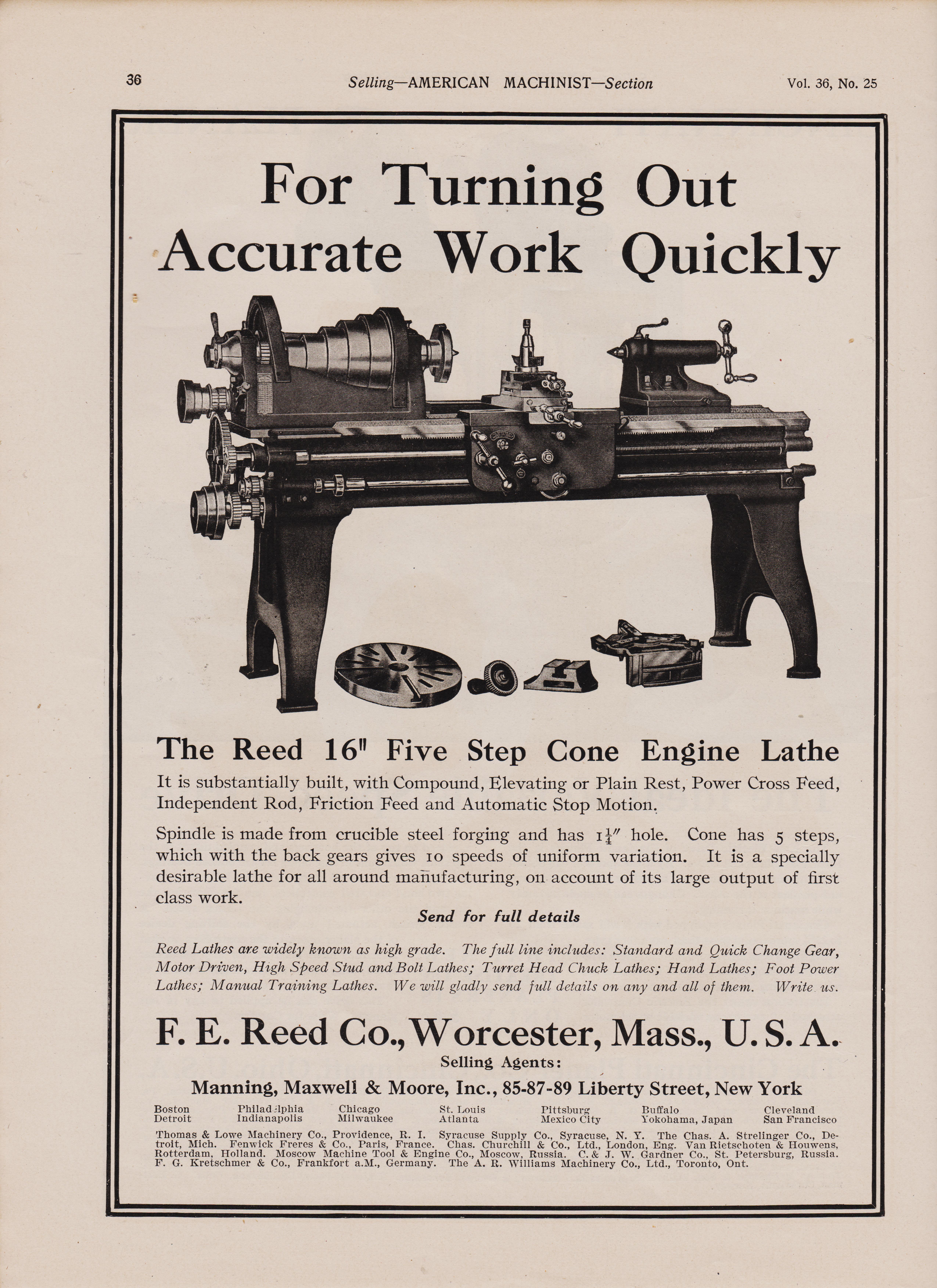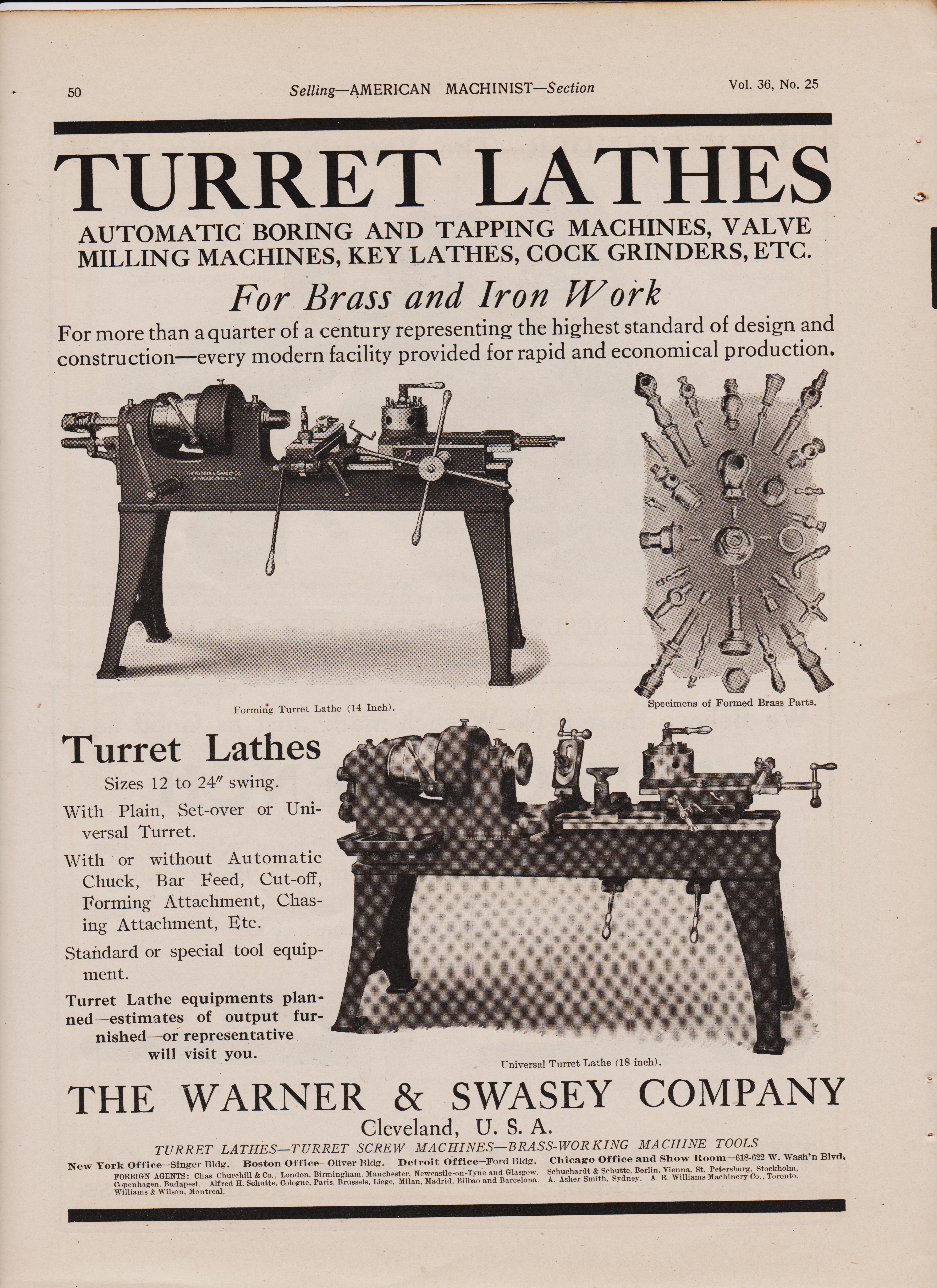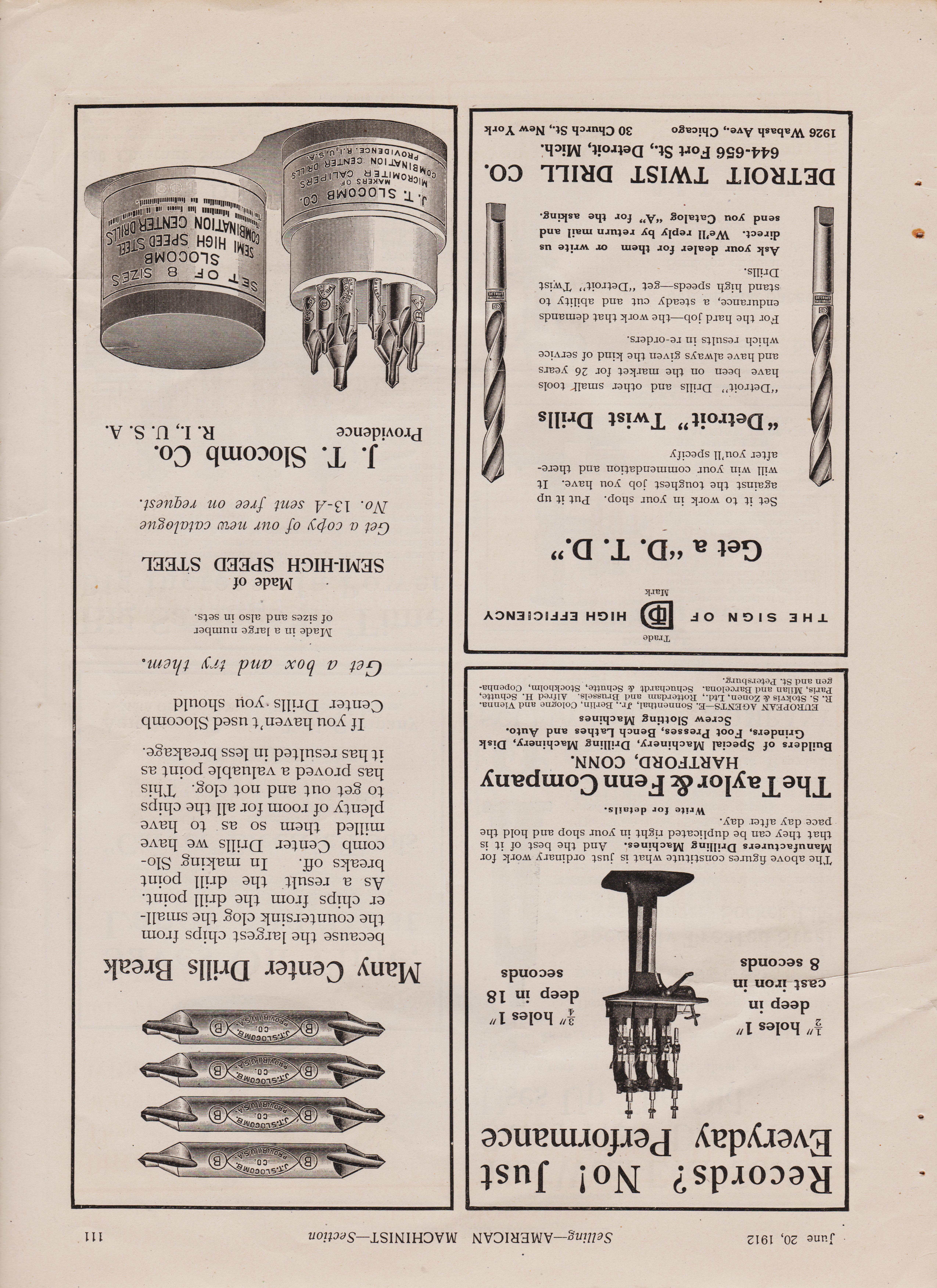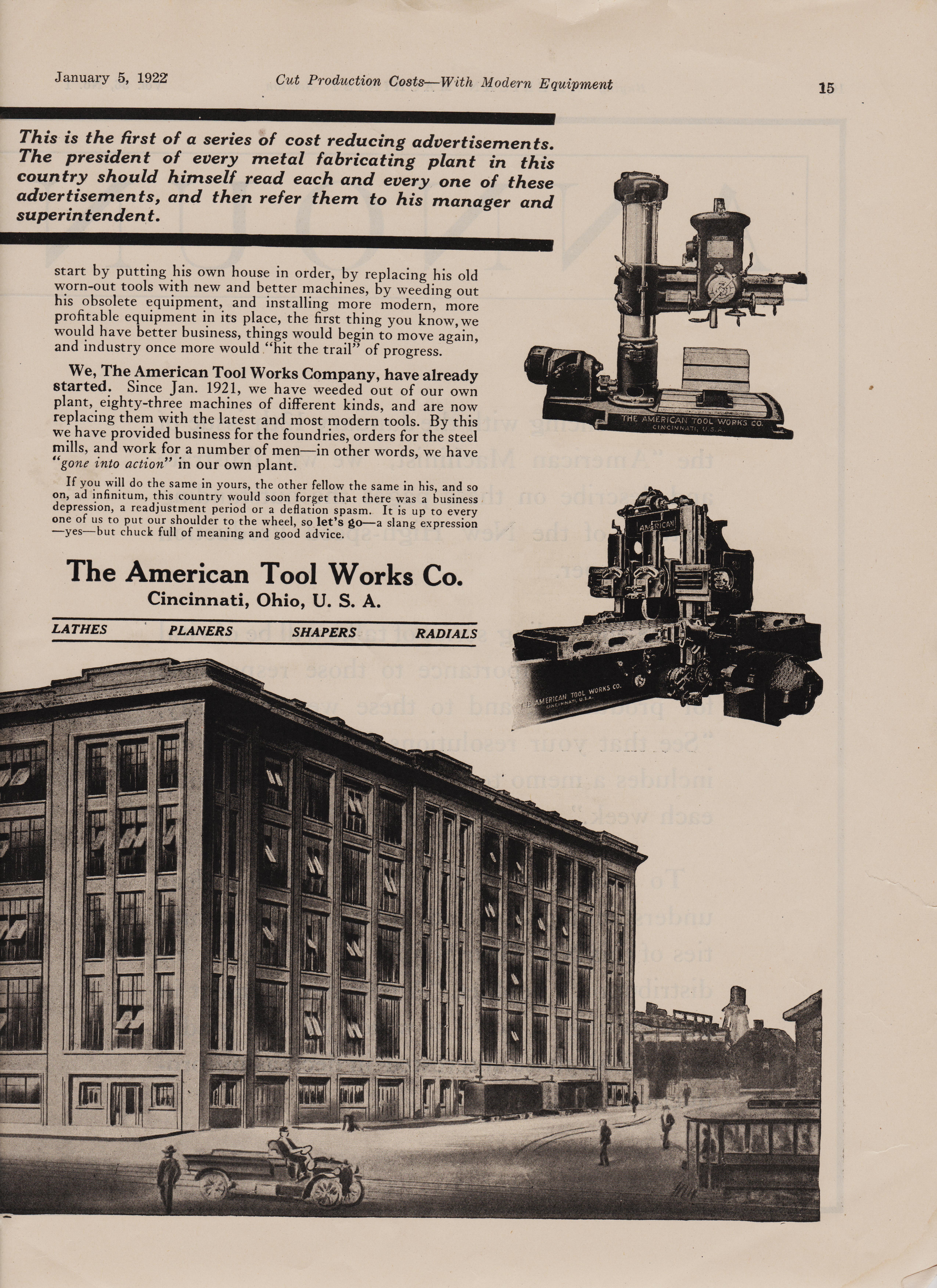
The pre WWl Years,
Gas Engine shop machining 1912
https://worldhistoryproject.org/1912
Apr 14 1912 RMS Titanic Sinks after Striking an Iceberg
June 20, 1912
Pulley Covering
The American No-slip Cement Co., Boston, Mass., hootCently perfected a pulley cement covering which it is mar-keting under the trade name of "Palium." It is easily applied with a brush, dries quickly, and produces a firm, dry, per-manent covering calculated to reduce belt slippage. In a series of tests conducted at the Massachusetts Institute of Technology to determine the relative efficiency in power transmission of cast-iron pulleys before and after treatment with "Palium," in regard to slip and coefficient of friction, the following results were established: 55 per cent. decrease in slip in favor of pul-leys covered with "Palium," the belt ten-sion varying from 60 to 80 lb. per inch of width; a decrease in the coefficient of friction from 0.189 to 0.169 on "Pal-ium."
Press Safeguard In Vol. 35, page 1045, there was shown a press safeguard made by the H. & A. Lock Co., of Brooklyn, N. Y., which has since been improved. The original guard was operated by the foot treadle' alone, as shown in Fig. 1, it being so timed as to rise previous to the tripping of the press. The improvement, as shown in Fig. 2, consists of an additional set of levers, so that the guard is operated at each revo-lution of the crank, regardless of whether the treadle is pressed or not. Any ac-
AMERICAN MACHINIST page 1013
cident to the treadle or clutch will not prevent the raising of the guard. In Fig. 1 the guard is shown lying flat on a level with the top of the die, and
Boumonville Co., New York, N. Y., and is known by the trade name "Oxygraph." It is on the principle of the pantograph. The operation is as follows: A drawing is made twice the size of the finished work. This drawing is laid on the tracer table. The tracer is mechan-ically propelled at a uniform speed to give the greatest efficiency and is driven by an electric motor attached to the head of the machine. Power is supplied to the motor either from a storage battery or by a wire from an electric light socket.
FIG. 2. VIEW FROM OPPOSITE SIDE, SHOW-ING CAM-OPERATING LEVERS
in Fig. 2 it is shown raised to its full height, the length of travel of the cam roller on the upper operating lever be-ing such that the guard remains up till the punch has fully entered the die.
Oxyacetylene Metal-Cutting Machine A new metal-cutting machine using the oxyacetylene flame is shown in Fig. 1. This machine is built by the Davis
FIG. 2. CRANKSHAFT 51 IN. KERF CUT IN 8% MINUTES
The operator guides the self-propelling tracer along the lines of the drawing, and the oxyacetylene torch cuts an exact reproduction of these lines in the steel. This reproduction is half the sire of the drawing. Steel three inches thick, and less can be cut at the rate of 6 in. per minute. The apparatus consists of a heavy cast standard and base for supporting the ma-chine, supports for the work while being cut, the tracing table, motor-propelled tracer, machine cutting-torch and hose
FIG. 1. PUNCH-PRESS SAFEGUARD
FIG. 1. OXYACETYLENE METAL-CUTTING MACHINE
June 20, 1912
Selling—AMERICAN MACHINIST—Section
27
Feed control is a vital element in the
daily handling of a milling machine
CONCENTRATION
On KEMPSMITH Millers
Visit https://antiquemachinery.com/images-2021/1912-American-Machinist-Magazine-1917-March-3-pg-3-Pratt-and-Whitney-Co-Taps-small-tools.jpg!
C1lick here to visit https://antiquemachinery.com/images-2021/1912-American-Machinist-Magazine-1912-June-pg-56-L-S-Starret-Co-Micrometer.jpeg!

Visit https://antiquemachinery.com/images-2021/American-Machinist-Magazine-1912-June-30-pg-2-Who-s-Who-W-F-and-John-Barns-Aubrey-Barns-60-per.jpg!

https://antiquemachinery.com/images-2021/1912-American-Machinist-Magazine-1912-June-pg-18-Cleveland-Automatic-Lathe-Machine-o-Milled-Shaved-Threaded-Formed-cut-Off.jpeg https://antiquemachinery.com/images-2021/1912-American-Machinist-Magazine-1912-June-pg-44--.jpeg https://antiquemachinery.com/images-2021/1912-American-Machinist-Magazine-1912-June-pg-127-Blue-Chip-Bits-The-Tabor-Power-Squezing-Molding-Machine-Molding.jpeg https://antiquemachinery.com/images-2021/1912-American-Machinist-Magazine-1917-March-3-pg-3-Pratt-and-Whitney-Co-Taps-small-tools.jpg https://antiquemachinery.com/images-2021/1912-American-Machinist-Magazine-1912-June-pg-39-Die-Chaser-Grinder-Geometric-Tool-Co-Kerny-and-Trucker-Slotter-Attachment.jpeg https://antiquemachinery.com/images-2021/1912-American-Machinist-Magazine-1912-June-pg-32-Co-wrench-The-Fosdick-macinneTool-Co-Boring-Mill.jpeg https://antiquemachinery.com/images-2021/1912-American-Machinist-Magazine-1912-June-pg-29-Radial-Drill-Press-Joseph-T-Ryerson-and-Son-Prentice-Bros-Co-Machinery.jpeg https://antiquemachinery.com/images-2021/1912-American-Machinist-Magazine-1912-June-pg-102-Modern-Cuter-grinder.jpeg https://antiquemachinery.com/images-2021/1912-American-Machinist-Magazine-1912-June-30-pg-91-Morse-Twist_drill-Automatic-Machine-Co-Worl-Benchtop-Press.jpeg





